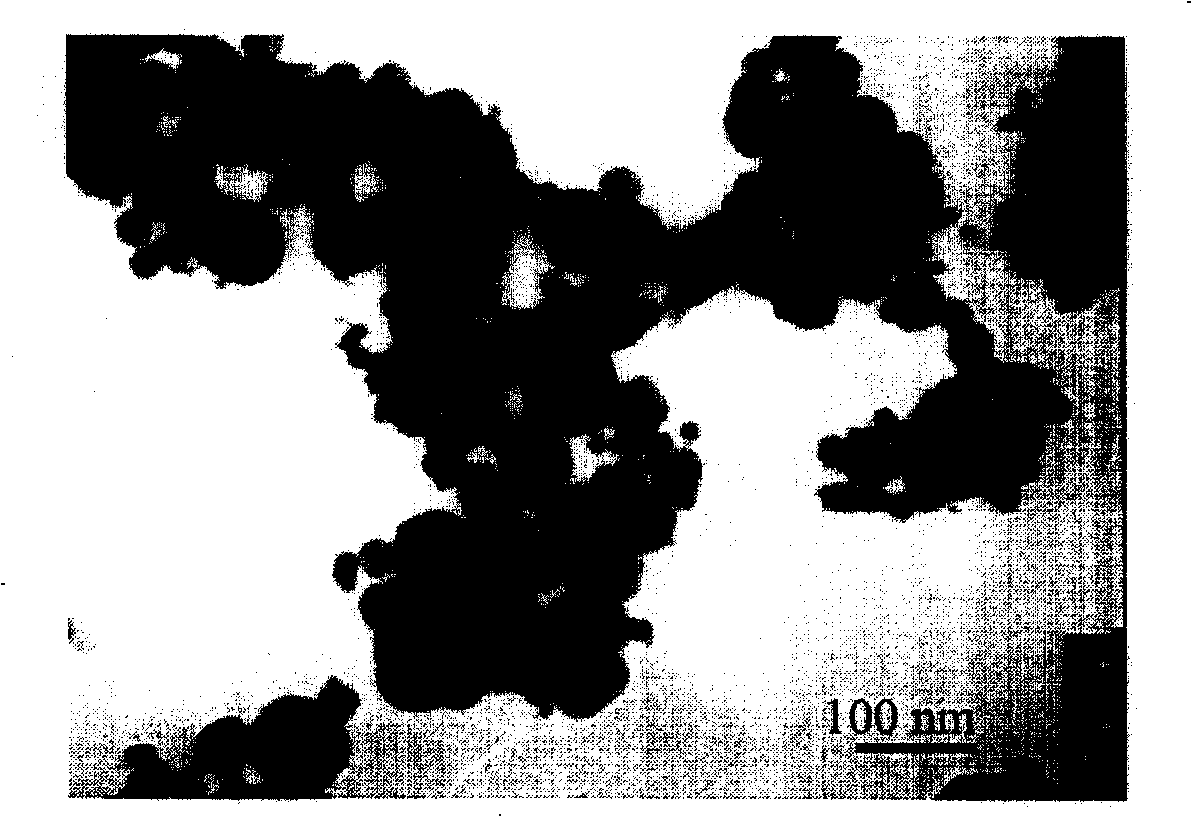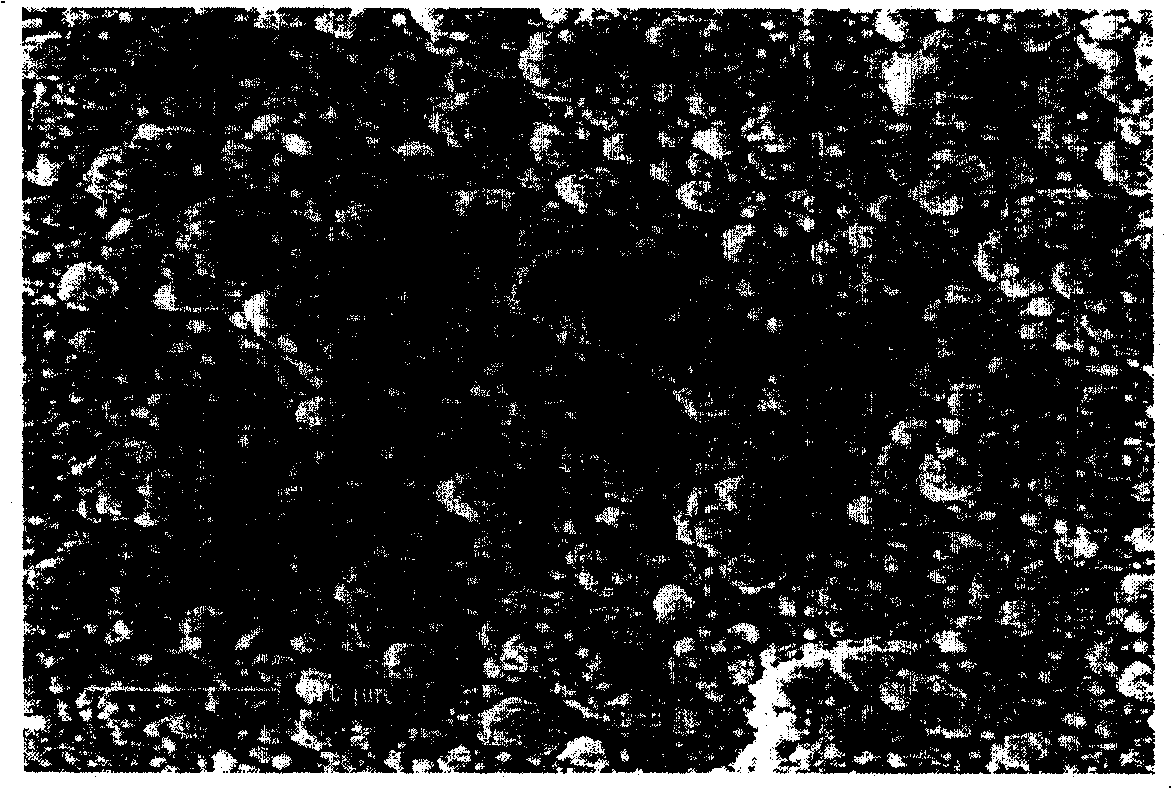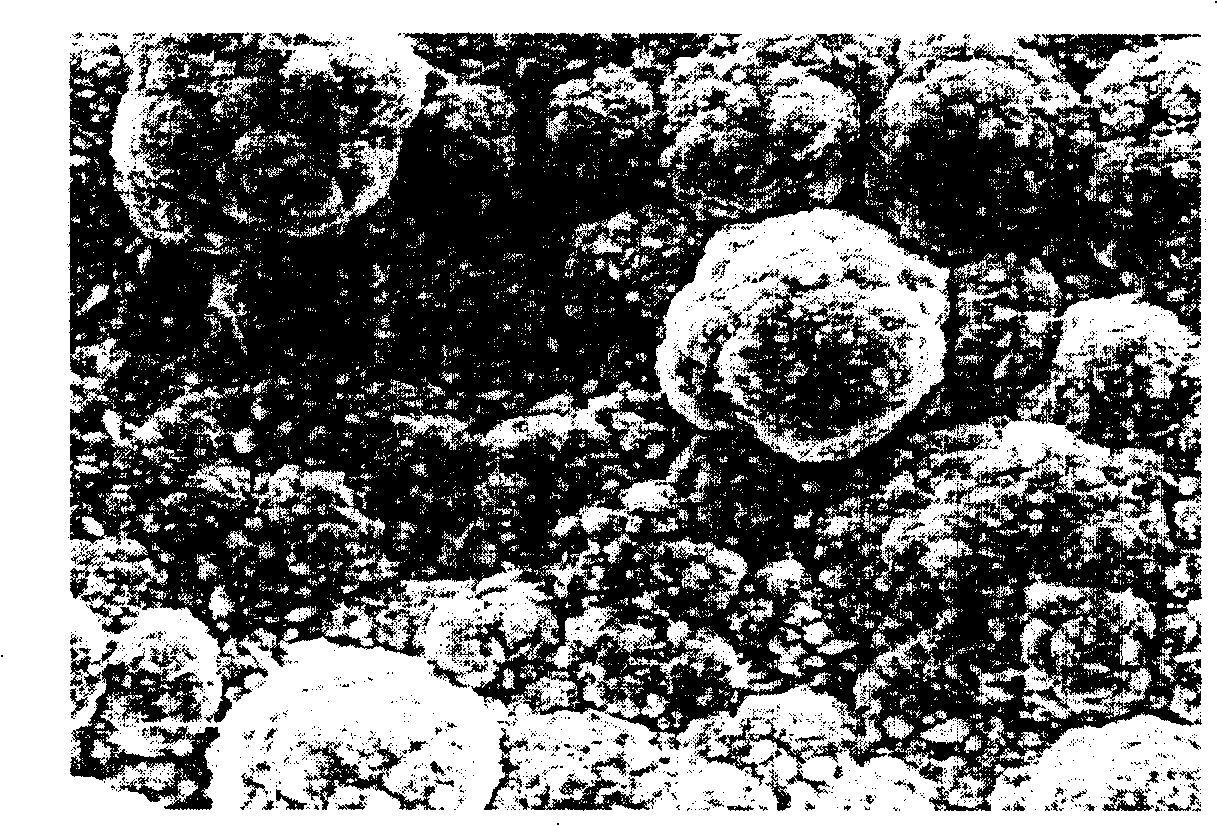Thermal growing Cr2O3 film type Cu-Ni-Cr nano composite coating and preparation and use
A nano-composite and thermal growth technology, applied in coatings, electrolytic coatings, etc., can solve the problem that Cu-Ni alloys do not have high temperature oxidation resistance, improve high temperature oxidation resistance, prevent peeling oxidation, nucleation and growth inhibiting effect
- Summary
- Abstract
- Description
- Claims
- Application Information
AI Technical Summary
Problems solved by technology
Method used
Image
Examples
Embodiment 1
[0036] This embodiment introduces the preparation and performance of Cu-Ni-Cr nanocomposite coating, and its preparation method is to adopt conventional co-electrodeposition (i.e. composite electroplating) technology to prepare Cu-Ni-Cr nanocomposite coating; Plating solution is a citrate system, Cr powder is nano-sized. This embodiment will be described in detail with the preparation and result example of Cu-Ni-Cr nanocomposite coating, figure 1 For the transmission electron microscope (TEM) appearance of the nano-Cr powder used in this embodiment, as can be seen from the figure, the average size of the nano-Cr powder is about 40nm (the nano-Cr powder used in this embodiment has a minimum of 10nm and a maximum of 70nm).
[0037] The process of preparing Cu-Ni-Cr nanocomposite coating in this embodiment is as follows:
[0038] Substrate (pure Cu used in the embodiment of the present invention)—surface polished to 1000# water grinding sandpaper—surface ultrasonic cleaning—carr...
Embodiment 2
[0046] This example provides Cu-Ni-Cr nanocomposite coatings and Cu55Ni alloy coatings with a Cu / Ni ratio of less than or equal to 1.0 and greater than or equal to 0.9, the performance and morphology after oxidation in air at 800 ° C for 20 h (the preparation method is the same as above). Specifically, Cu44Ni15Cr and Cu41Ni20Cr nanocomposite coatings (Cu / Ni ratios are 0.93 and 0.95, respectively) are taken as examples.
[0047] The high-temperature oxidation experiment adopts the TGA instrument of model TherMax700 produced by Thermo Cahn Company, the heating rate is 50°C / min, the temperature is kept at 800°C for 20 hours, and then cooled with the furnace. Figure 6 It is the thermogravimetric analysis (TGA) kinetic curve of Cu55Ni alloy coating and Cu44Ni15Cr, Cu41Ni20Cr nanocomposite coating after oxidation in air at 800℃ for 20h. It can be seen from the figure that the high temperature oxidation resistance of the nanocomposite coating has been greatly improved. Figure 7-a ...
Embodiment 3
[0053] This example provides a Cu-Ni-Cr nanocomposite coating with Cu / Ni>1.0 (Cu-rich) and a thermal gravimetric analysis (TGA) curve after oxidation in air at 800° C. for 20 h. Specifically, Cu40Ni alloy coating and Cu30Ni20Cr nanocomposite coating (Cu / Ni ratios are 1.50 and 1.67 respectively) are taken as examples.
[0054] Figure 11 It is the thermogravimetric analysis (TGA) curve of Cu40Ni alloy coating and Cu30Ni20Cr nanocomposite coating after oxidation in air at 800℃ for 20h. It can be calculated from their parabolic kinetic curves that the parabolic constant of the Cu40Ni alloy coating is 2.2×10 -9 g 2 cm -4 the s -1 , the average parabolic constant of the Cu30Ni20Cr nanocomposite coating is 4.3×10 -11 g 2 cm -4the s -1 , it can be seen that the high-temperature oxidation resistance of the composite coating with a nano-Cr content of 20% has been improved by about 2 orders of magnitude, and a continuous and dense Cr 2 o 3 membrane.
PUM
| Property | Measurement | Unit |
|---|---|---|
| size | aaaaa | aaaaa |
| thickness | aaaaa | aaaaa |
| thickness | aaaaa | aaaaa |
Abstract
Description
Claims
Application Information
 Login to View More
Login to View More - R&D
- Intellectual Property
- Life Sciences
- Materials
- Tech Scout
- Unparalleled Data Quality
- Higher Quality Content
- 60% Fewer Hallucinations
Browse by: Latest US Patents, China's latest patents, Technical Efficacy Thesaurus, Application Domain, Technology Topic, Popular Technical Reports.
© 2025 PatSnap. All rights reserved.Legal|Privacy policy|Modern Slavery Act Transparency Statement|Sitemap|About US| Contact US: help@patsnap.com



